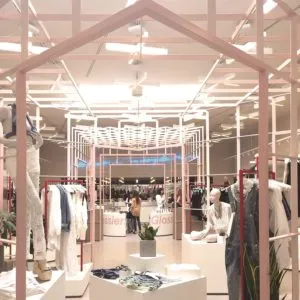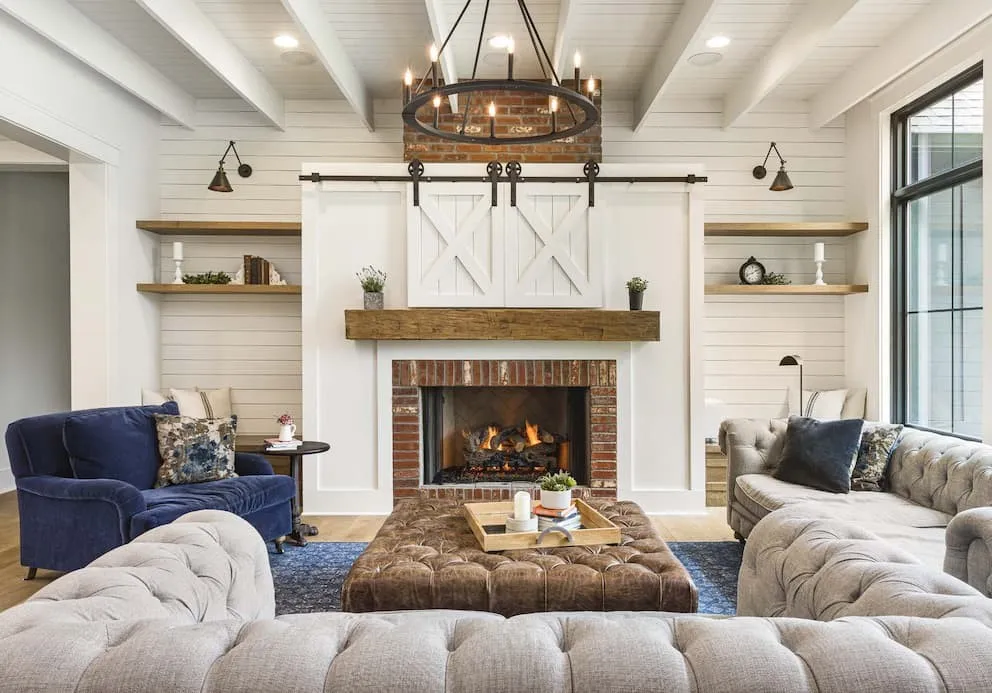Table of Contents
As the physical retail footprint evolves, the future requires advanced development to virtual implementation and a deeper commitment to the omnichannel experience
Retailers will be looking for materials that are more conducive to providing safe, clean environments for consumers when they are ready to have hands-on shopping experiences again. This could mean a wider use of synthetic building materials as opposed to natural wood, for example, which is porous and requires specific cleaning products and may be damaged by harsh sanitizers.
The term “Retail Apocalypse,” coined around 2010 during a period of rampant closures of numerous North American brick-and-mortar retail stores, especially large chains, threatened to change the face of shopping malls forever. In 2017, the expression “Amazon Effect,” introduced by Business Insider, depicted how the online mega-retailer was generating greater than 50% of the growth of retail sales, seeming to further hammer the nail into the coffin of physical retail. Now, retail is facing a new challenge with COVID-19, although the physical retail environment was already undergoing a major evolution before the pandemic forced many stores and businesses to close shop, some temporarily and others permanently.
Over the past decade or so, changing consumer needs and generational shopping habits including the rise of the Millennial and Gen Z cohort, coupled with the growth of e-commerce and social media, as well as other external factors, have led to the reimagining of the “Retail Experience.” From transforming a big-box shopping center to a live-work-play destination and designing stores with a smaller footprint to short-term pop-up activations and the shop-in-shop concept, these changes have led to an insatiable appetite for unique brand interactions. What impact will the post-COVID world have on the future of retail? No one can say for sure, but one thing is certain; the physical retail store can only continue to play an important role in the customer journey if it is enhanced by technology and personalization, to draw in-person presence and create a truly omnichannel shopping experiences.

The rise of experiential retail as its new driving force is most evident in the evolution of the physical retail environment, which has been stripped down of bulky fixtures and excess inventory, allowing for more of these “moments” to take place. In an effort to appeal to next-generation shoppers, digital displays and “Instagrammable” features have replaced rows of shelving and cluttered stands, creating modern spaces with the intent to influence how consumers perceive and experience the retail environment. This transformative value proposition provides a sense of community, a shared experience, something to engage with.
This new retail philosophy places brand trust at the forefront, paying close attention to what customers want to get in return for their time and money. No longer is it acceptable for retailers to simply open a physical location and hope to capture the attention of shoppers. Brands cannot grow or remain competitive without an innovative approach to enhancing the physical experience of their brick-and-mortar store through digital touch points. In response to COVID-19, the shift to virtual retail is, for many brands, a necessary pivot as they take a broader approach to reaching consumers, while repositioning their product and service offerings to meet a wide variety of consumer needs during this time.

One format of brick-and-mortar retail, which is inherently about utilizing technology and the digital world to drive engaging consumer experiences both online and offline, is pop-up retail. Implicit in the strategy of a pop-up is the physical manifestation of a marketing execution, but also a digital campaign that integrates touch points across social, online, and traditional in-store channels. “It’s this multichannel optimization that has allowed pop-up retail to become more prominent in recent years as brands, of all types and sizes, recognize the benefits of experiential marketing to offer carefully curated experiences that both drive foot traffic and provide unique brand interaction,” said Linda Farha, industry expert and founder of pop-up go.
True there are many advantages to pop-up retail, as an ephemeral and captivating approach to testing a new product or service, reaching a new market segment, or bolstering sales to name a few. While pop-ups of the past have always focused on creating a physical presence, augmented by complimentary digital and virtual initiatives, pop-ups of the future will need to respect COVID-19-related social distancing measures, while adapting to the new era of physical retail.
According to Farha: “COVID-19 has expedited trends which were already beginning to have an impact on the retail industry. For example, rationalization of department store and large chain presence and the increasing demand for smaller, more controlled retail environments.” Larger stores may have a harder time adapting to the post-COVID retail environment, if not simply because of the increased cost in overall operations due to new health and safety screening measures and managing social distancing orders.
Small format stores, including pop-ups, are better positioned to adapt quickly and will find it easer to move to, or augment, their digital footprint. Opportunity connector and pop-up facilitator pop-up go, is helping brands and retailers who may have been interested in executing a physical pop-up activation before the pandemic, to do so entirely online, while they wait for the brick-and-mortar retail world to reopen. “We’re launching a digital division called projeX to help our clients extend their physical brands, by providing an online marketplace where they can execute their pop-up activation virtually. This can be to increase or create brand awareness, launch a new product, reward loyal customers, gain insights, increase customer database, and much more,” explains Farha. Some businesses have already started jumping onto this new trend, including Newcastle[i] who hosted a virtual pop-up indoor plant sale and Toronto women’s intimates brand Knix[ii] who transitioned its “warehouse sale” online and saw an increase in sales.

Long-term, pop-up stores may become the dominant format of the physical retail environment. More brands will continue to embrace e-commerce channels, while using specialized pop-ups for things like new product launches, promotional sales, and for creating exclusive experiences that are largely missing from traditional retail stores. The advantages for retailers are obvious – reduced risk and expenditures associated with permanent stores, as well as the ability to reach several markets at once. For landlords too, the opportunity to lease space on a short-term basis that might otherwise sit vacant, to reduce carrying costs, and expose new business ventures, makes pop-ups appealing as a viable marketing strategy for their properties.
The temporary nature of pop-up stores means the physical space needs to be designed to be highly customizable and easy to change quickly. Therefore, the need for supporting businesses, those that manufacture and construct custom buildouts, furniture, interior displays, and the like, will increase. It is also likely that the materials themselves used in brick-and-mortar retail construction will change. Retailers will be looking for materials that are more conducive to providing safe, clean environments for consumers when they are ready to have hands-on shopping experiences again. This could mean a wider use of synthetic building materials as opposed to natural wood, for example, which is porous and requires specific cleaning products and may be damaged by harsh sanitizers. In addition, compact, modular and multi-purpose fixtures may become more popular since they are simpler and faster to install and reconfigure, depending on the needs of the retailer. Furthermore, since pop-ups typically have a small footprint and open concept, it makes sense that, as far as physical retail goes, pop-up stores may be approved to reopen sooner than shopping malls and large-format retailers because they can more effectively meet the health and safety and physical distancing requirements that are likely to remain in place for months to come.
The ongoing COVID-19 pandemic has made it abundantly clear that e-commerce capability is an essential sales platform for many businesses, now and in the future. Furthermore, the current interruption of normal business sales practices presents a good opportunity for businesses to turn their attention to creating or updating their e-commerce capabilities while they prepare for the eventual return to some form of normalcy. In the meantime, understand that physical retail is certainly not dead, but it is undergoing a significant transformation, further exacerbated by the current pandemic. Consumers are human after all, and as humans we crave physical interaction – we want to browse, touch, taste, and smell before making some purchasing decisions. Almost certainly, physical retail stores will remain as a primary point of contact with consumers, taking on a renewed, more crucial role in the customer journey.







